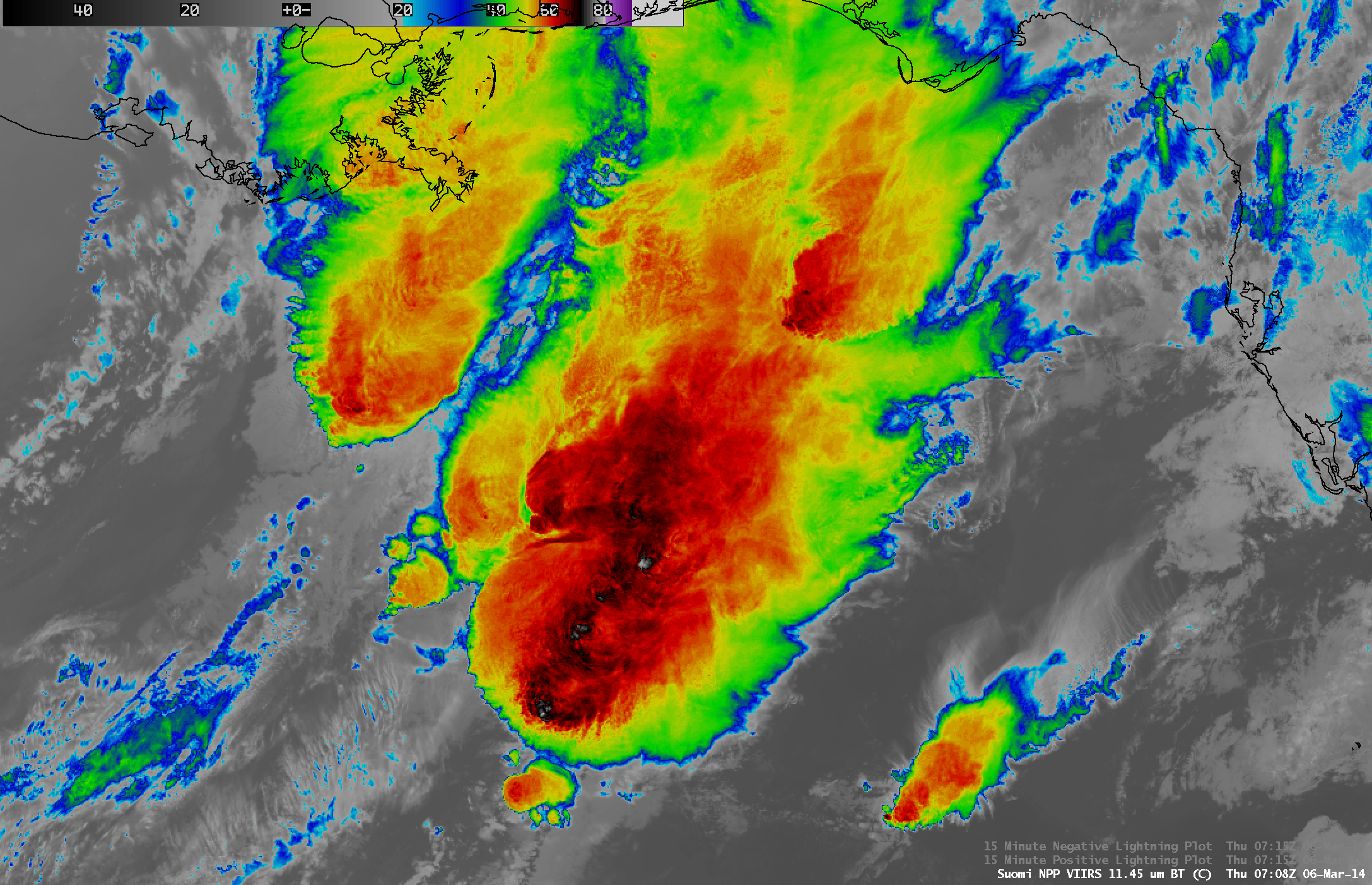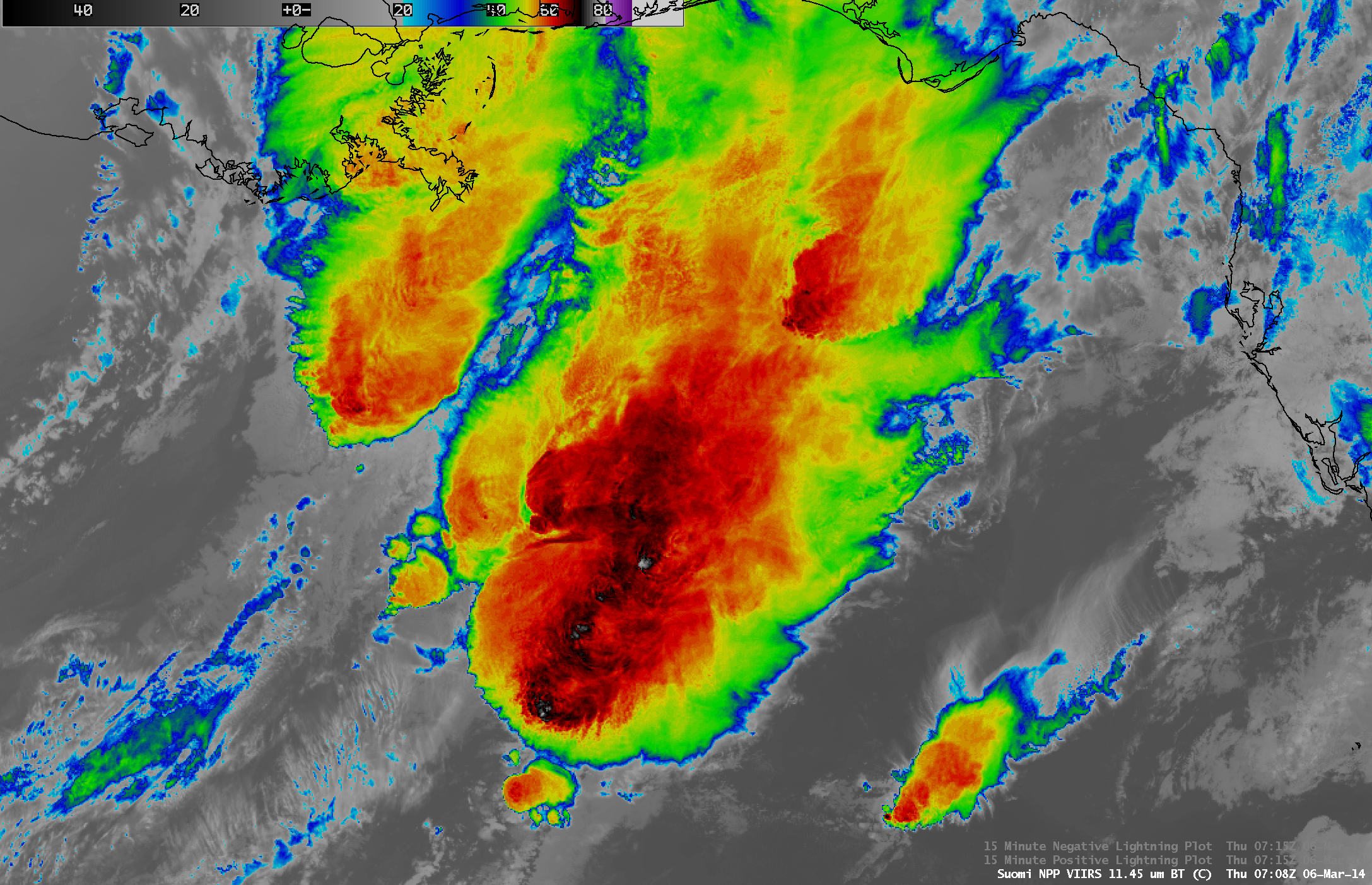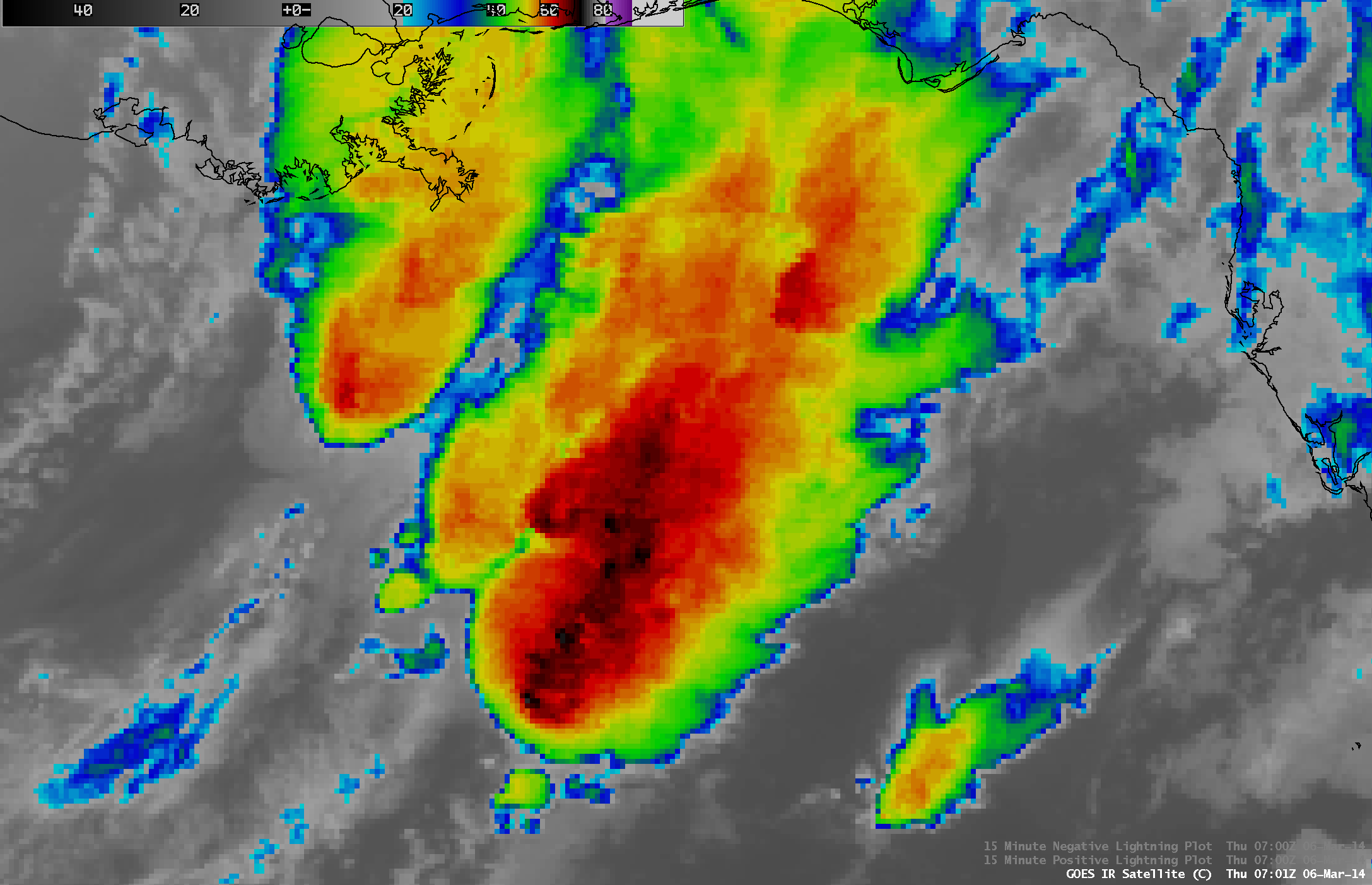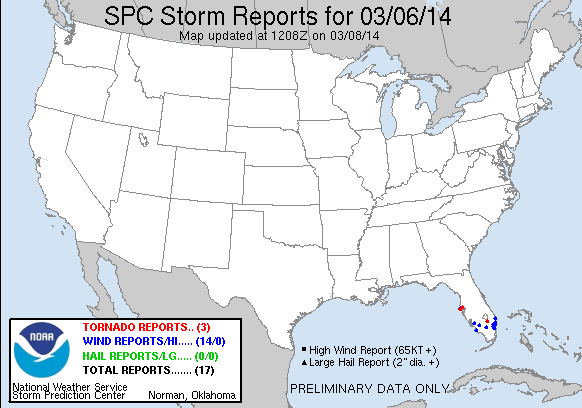Severe thunderstorms over the Gulf of Mexico
A night-time AWIPS image comparison of Suomi NPP VIIRS 11.45 µm IR and 0.7 µm Day/Night Band data (above) showed a large mesoscale convective system (MCS) over the Gulf of Mexico at 07:08 UTC (2:08 AM local time) on 06 March 2014. On the IR image, brightness temperatures were as cold as -80º C on the far southern end of the storm, which had developed in the warm sector of a developing area of low pressure (surface frontal analysis). The Day/Night Band image revealed: (1) numerous bright west-to-east oriented “lightning streaks” caused by intense lightning activity illuminating the MCS cloud and cloud top — note that there were over 1300 cloud-to-ground (CG) lightning strikes detected in a 15-minute period, and (2) arc-shaped mesospheric airglow waves propagating northward and northeastward away from the region of vigorous overshooting tops at the southern end of the MCS.
A comparison of the 375-meter resolution Suomi NPP VIIRS 11.45 µm IR image with a 4-km resolution GOES-13 10.7 µm IR image (below) showed that the higher spatial resolution of the VIIRS data provided much clearer view of the various cloud structures along with a better depiction of the values of the cloud-top IR brightness temperatures.
GOES-13 10.7 µm IR channel images (above; click image to play animation) showed the evolution of the MCS as it continued to move eastward toward Florida. A squall line developed along the leading edge of the MCS, which played a role in producing a few tornadoes and areas of damaging winds over the southern half of the Florida peninsula (below).





